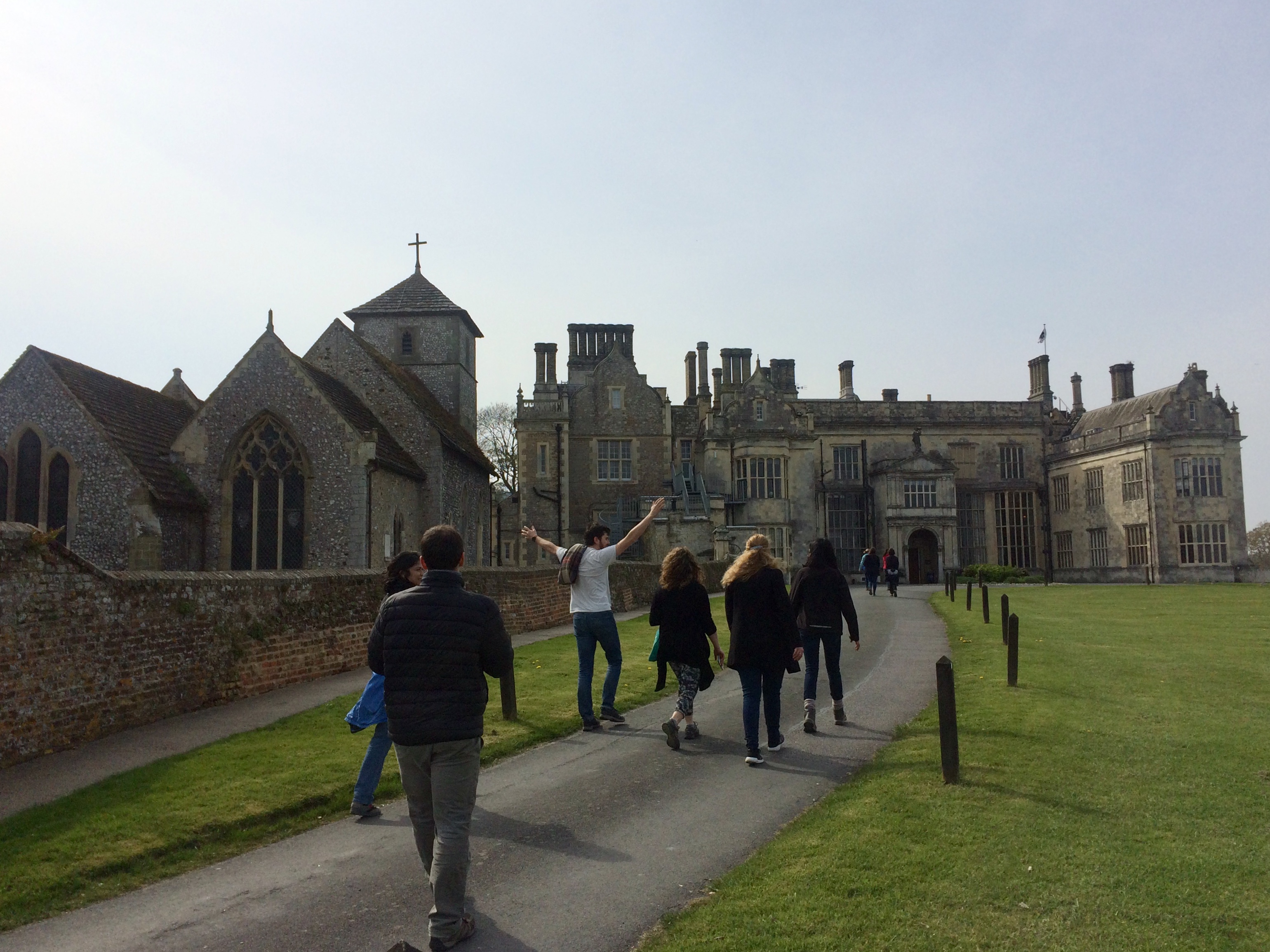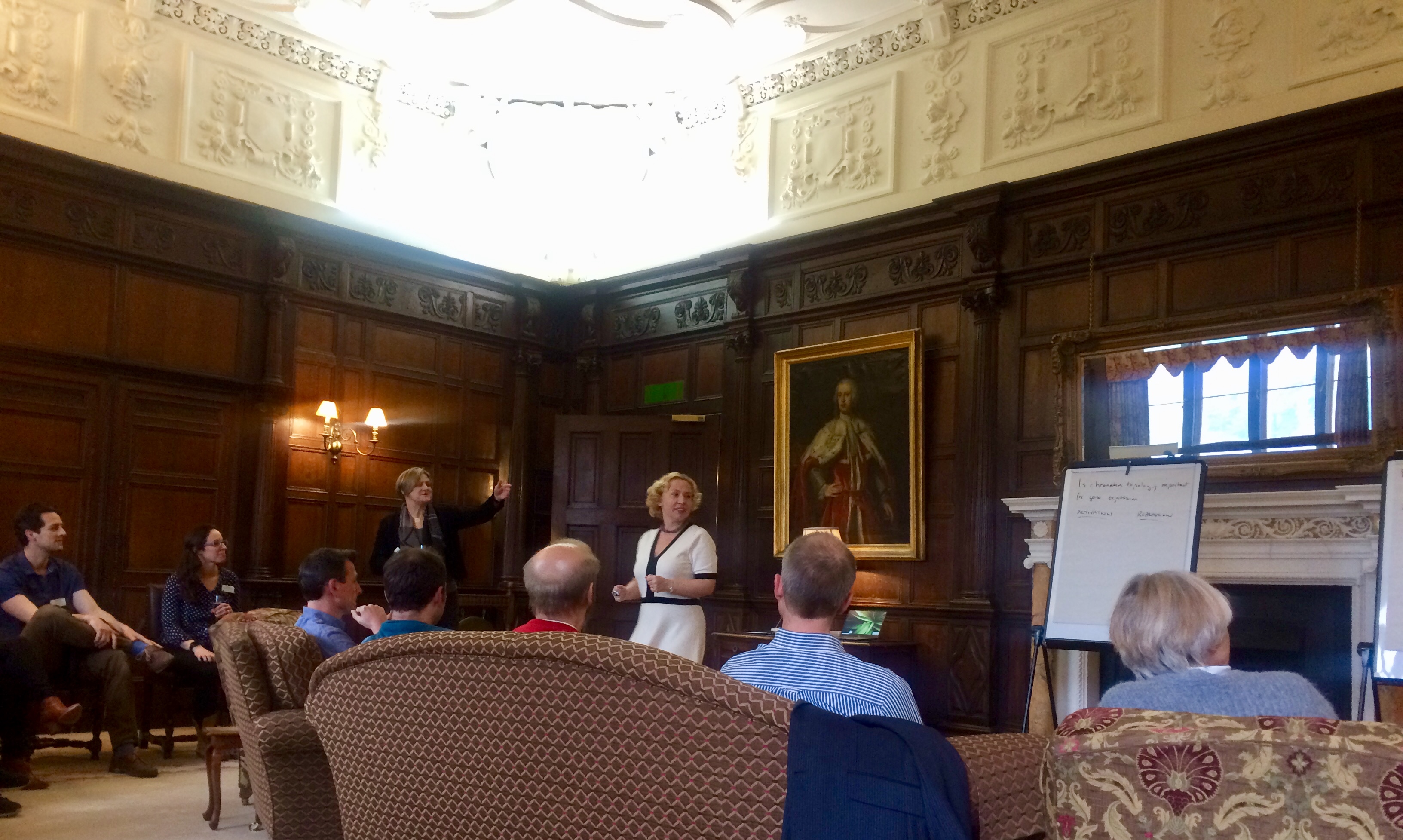Echoes of “Chromatin-Based Regulation of Development” workshop OR “to TAD or not to TAD”?
Posted by Martyna Lukoseviciute, on 14 May 2019
The non-profit publishing groups can make a real difference
The very best part of being a scientist is cracking mysteries of the universe and what is in it. The second best thing about this profession, in my opinion, is being part of a scientific community. Conversations, conferences, workshops, collaborations, networking, support and constant inspiration from one another serve as a magic glue that keeps us together and motivates us to keep pushing the boundaries of the unknown. A perfect example of fostering a scientific community is the astounding job done by The Company of Biologists. As you may know, The Company of Biologists is a not-for-profit publishing organisation dedicated to supporting and inspiring the biological community. After attending the truly inspiring and excellent workshop on ‘Chromatin-Based Regulation of Development’ this April, I now genuinely understand the differences between profit-oriented and community-oriented publishing groups. The Company of Biologists is on a profound mission to give back to the community, for example, by organising workshops that aim to bring together scientists who would normally rarely meet, across the globe from the same or different fields. This holds real power and serves an important purpose for both scientists individually and science on the whole. I would like to thank The Company of Biologists for creating such great initiatives and also share my experiences of this fantastic workshop from an early career scientist’s view (I’m currently a final year PhD student in Tatjana Sauka-Spengler lab in the University of Oxford).
The highlights of the ‘Chromatin-Based Regulation of Development’ workshop
The workshop was organised by Benoit Bruneau (Gladstone Institutes, UCSF, USA) and Joanna Wysocka (Stanford University, USA) for 30 participants (17 invited speakers and 13 selected early-career researchers like me). The entire workshop was fully funded by the Company of Biologists: even the selected early-career researchers did not have to pay for attendance, which – let’s be honest – is somewhat unheard of! It was situated in a beautiful English manor house, Wiston House, in the South Downs National Park on the south coast of England. The venue, including my room, was so gorgeous that for four days I got to feel a little bit as if I belonged to the Royal family.
The purpose of the workshop was to bring together scientists from different places, expertise and career levels, yet it felt as if it was a non-hierarchical environment, where all scientists had an opportunity to contribute to all aspects of this great workshop equally. For instance, each one of us, no matter who, a PhD student or a professor, had an opportunity to officially present their research and answer questions for 30 minutes followed by an informal discussion and further questions during coffee breaks or at the cosy Wiston house bar. Also, dinners were organised superbly, where we were randomly allocated a different seat every night, getting a chance to speak with different scientists. This way, I got to sit and connect with scientists, such as Joanna Wysocka or Stefan Mundlos, that I would have been most likely too shy to sit next to in a ‘real-life’ setting. Overall, it was very nice to not only discuss scientific questions but also to get advice for future career steps and to talk about life-work-balance, women in science problems and other relatable questions.

The workshop topics
The workshop consisted of nine sessions. The first two sessions focussed on 3D genome regulation during various developmental processes – from embryo patterning to limb development to synthetic Hox cluster building. During the workshop, we extensively scrutinised whether topologically associating domains (TADs) are actually central for gene regulation or rather if they only play genome-packaging/replication roles. Surprisingly, a lot of presented data challenged the importance of TADs for gene regulation (as nicely and critically reviewed in another participant’s – Roel Neijts’ – Node post (https://thenode.biologists.com/meeting-report-chromatin-based-regulation-of-development-an-excellent-workshop-by-the-company-of-biologists/events/)).
Other sessions delved into enhancers, their sequence variations and gene regulation during early development. We got to learn how histone variants at enhancer sites can play a predominant part in tissue-specific gene regulation and when misregulated can lead to severe cranial facial syndromes. Or how some enhancers are critical for sex determination and how knocking them out can lead to sex reversal despite the inherited X or Y chromosome combinations. Overall, the emerging trend indicated that active enhancers usually stay active despite TAD perturbation and that their close proximity to promoters is, most of the time, enough to drive correct gene expression; by contrast, inactive enhancers – even when they are ectopically brought to promoters – almost never get ‘turned-on’. Therefore, maybe chromatin marks rather than chromatin confirmation are more instructive when it comes to gene regulation?

We also looked into how transcription factors (TFs) regulate chromatin dynamics and nucleosome phasing. For instance, how do TFs work together with morphogens or in a combinatorial TF manner to create certain types of chromatin that correspond to tissue-specific gene expression? Or, how are they capable of forming liquid-like aggregates allowing a local increase in the concentration of scarcely available TFs in both plants and animals? Undeniably, the topic of phase-separation was extensively deliberated during both the talks and our evening debate. It seems that for us, biologists, this subject is still somewhat of a phenomenon when it comes to gene regulation. However, a steadily increasing number of experiments show that phase-separation might play very important roles, as illustrated by heterochromatin formation driven by HP1a phase-separation or polycomb body aggregation, which is important for gene repression and even formation of a repressive 3D chromatin.
Food for thought
Lastly, this brilliant workshop taught me a lot not only about the different shapes and shades of chromatin but also about its formation, dynamics and roles in developmental gene regulation. It was rather eye-opening to see how important it can be to learn from experts in a completely transparent and relaxed environment, where no one was afraid of sharing unpublished data, hypotheses and ideas. This was truly freeing and inspiring, and I could start shaping my own ideas and endorse a different way of thinking about my own research and future directions. Different emerging methods of studying chromatin were brought into the light of this workshop, e.g., not only looking at chromatin marks and accessibility using molecular biology methods , but also trying to visualize chromatin by employing different new imaging tools (after all – seeing is believing!) or turning to biophysical principles of embryo development and underlying chromatin-mediated gene expression dynamics. Taking even one step further, towards Feynman’s school of thought (“What I cannot create, I do not understand”), we got to hear about the importance of synthetic systems to generate in vitro chromatin, engineer chromatin contacts using optogenetics tools or produce synthetic embryo-like structures (e.g. gastruloids) in order to genuinely understand the basic principles and rules of many yet unanswered questions of chromatin-based regulation of development. As you might have already thought, usually there is no perfect single methodology to solve complex biological puzzles, and only collaborations between different fields can facilitate the quality and speed of putting all the pieces of such puzzles together. Importantly, workshops like this one that I had a privilege to attend bring experts from different fields together, which definitely accelerates the progress of science and inspires a lot of young scientists to tackle even the most complex problems of our universe in new ways.


 (9 votes)
(9 votes)